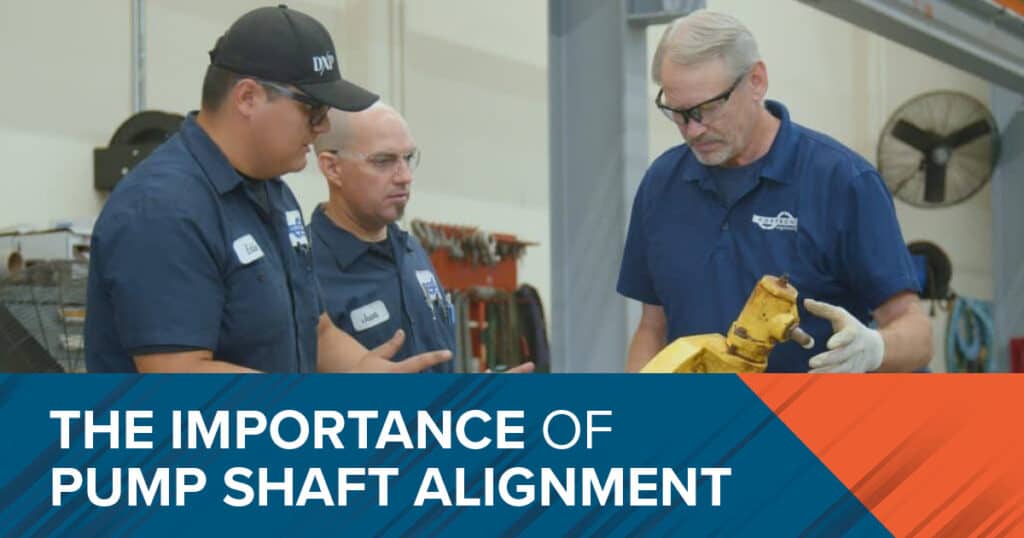Shaft alignment is one of the most critical steps in the pump installation process. It is also something that must be inspected and tested regularly as part of a proper pump system maintenance plan. Many factors can affect pump shaft alignment. The slightest misalignment can cause significant problems during operation. These issues include poor equipment performance, loss of energy efficiency, loss of pressure, and catastrophic equipment damage.
What Is Pump Shaft Alignment?
This is the process of aligning the pump’s shaft with the motor’s shaft. The two shafts must be aligned perfectly straight and concentric for optimized equipment performance. Alignment should fall within specific manufacturer tolerances. If not, you are at risk of various pump problems that may cause premature system failures and lead to costly repairs. Shaft misalignment is one of the most common sources of pump failures, according to DXP Pacific technicians.
When done accurately, pump shaft alignment provides the following benefits:
- Reduced Risk of Damage—Proper shaft alignment minimizes vibrations. This decreases wear and tear on various pump components, including the bearings, seals, and couplings. Ultimately, this increases the life span of your pump equipment and reduces the risk of other damage.
- Reduced Maintenance Costs—Less wear and tear means less downtime for maintenance and repairs, though maintaining accurate shaft alignment through regular inspections should be a priority within your pump maintenance plan.
- Increased Energy Efficiency—Precisely aligned shafts improve energy efficiency through optimized power transfer. Misalignment can dramatically increase your operating costs.
Shaft Alignment Methods
There are numerous ways to achieve proper shaft alignment. Laser alignment is the most common technique. This technology makes the process easier and can provide accurate alignment readings. However, it is not always foolproof. There are also more old-fashioned manual alignment methods, such as double reverse. At DXP Pacific, our technicians are properly trained in various shaft alignment techniques and technology. Having a broader range of skills ensures the best possible results when we’re performing a pump installation or maintenance for our clients.
Signs of Shaft Misalignment
Many signs point to pump shaft misalignment or some other operating problem within a pump system. Here are some of the issues to look for:
• Excessive noise
• Excessive vibrations
• High temperatures
• Loss of pressure (reduced flow rate)
• Increased wear on seals or bearings
• Fluid leaks
• Loss of energy efficiency
• Frequent maintenance or repair needs
Factors that Affect Shaft Alignment
The most common source of shaft alignment problems starts with the base of the pump. If the mounting and base plate don’t provide a secure, level foundation for the pump equipment, alignment issues are likely to occur. Loose connections or unlevel surfaces are causes for concern. Bolts should be checked and tightened regularly. Welds should be strong and fixed if they begin to weaken. Shims may need to be added to make up for slight misalignments. Everything must be measured carefully and remeasured again. Then it should all be checked and tested on a routine basis.
It’s also important to understand that things shift and move around during operation. Some vibration, temperature changes, motor speeds, and changes in environmental conditions are unavoidable. However, all of these factors can affect the shaft alignment. This is why it should be a priority in your maintenance plan. Catch the misalignment before it causes more trouble.
For all your pump management needs, including precision pump installation and optimized pump maintenance support, contact DXP Pacific today. Our technicians are well trained in the fine art of pump shaft alignment. We can help you get the most out of your equipment!

